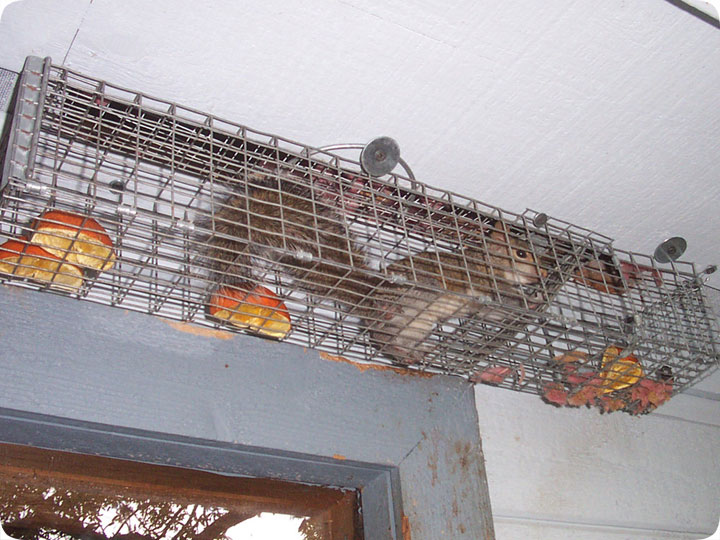-
info@aaanimalcontrol.com
Call us for help in your town
Humane Wildlife Education
Squirrels in the Eaves

The squirrels have chewed some holes in the flimsy vent areas underneath the eave. It's easy to trap them with this special trap - it's a repeating trap. It's got a one-way door and a nose cone. The squirrel comes out of its normal hole, and it has nowhere to go but to push through the one-way door. It then gets stuck inside the trap. I've put some oranges inside this trap to encourage it to enter. Squirrels like oranges quite a bit, and they provide hydration so the animal doesn't get too thirsty.
The trap opens at the back, and I transfer squirrels to a holding cage and relocate them far outside the city in the evenings, and I keep trapping until no more squirrels are caught. If the trap stays up for a week or so with no catches, and the customer stops hearing noises, I know that all the squirrels have been caught. At that point, I remove the trap and fix the holes. In a house like this, I usually install a heavy steel screen along the entire eave vent to keep future critters out of the eaves permanently.
Do it yourself: Visit my How To Get Rid of Squirrels page for tips and advice.
Get professional help: Visit my Nationwide Pro Directory of wildlife removal experts.
The Eastern Gray Squirrel (Sciurus carolinensis), is one of the most widespread nuisance animals in the country. It lives throughout most of the United States. It is arboreal (likes to live in trees), but just as commonly atticeal (likes to live in attics). It's a member of the rodent family, and is prone to chewing and gnawing. Squirrels are active during the daytime, particularly morning and evening. They are active year-round. They give birth to two litters of young per year, in late summer and late winter, commonly inside buildings they've chewed into. They are very agile and great climbers, and are active animals. They are cute, but often destructive, especially when they enter an attic.
For more wildlife stories, click my Wildlife Blog, or click my below banner to hire a local trapper.





















